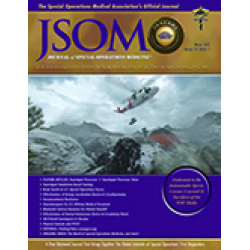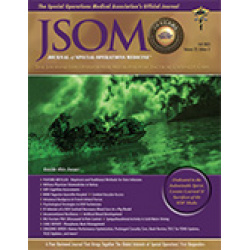Latest Products
No Slackers in Tourniquet Use to Stop Bleeding
Polston RW, Clumpner BR, Kragh JF, Jones JA, Dubick MA, Baer DG 13(2). 12 - 19 (Journal Article)
Background: Tourniquets on casualties in war have been loose in 4%-9% of uses, and such slack risks death from uncontrolled bleeding. A tourniquet evidence gap persists if there is a mechanical slack-performance association. Objective: The purpose of the present study was to determine the results of tourniquet use with slack in the strap versus no slack before windlass turning, in order to develop best practices. Methods: The authors used a tourniquet manikin 254 times to measure tourniquet effectiveness, windlass turns, time to stop bleeding, and blood volume lost at 5 degrees of strap slack (0mm, 25mm, 50mm, 100mm, and 200mm maximum). Results: When comparing no slack (0mm) to slack (any positive amount), there were increases with slack in windlass turns (ρ < .0001, 3-fold), time to stop bleeding (ρ < .0001, 2-fold), and blood volume lost (ρ < .0001, 2-fold). When comparing no slack to 200mm slack, the median results showed an increase in slack for windlass turns (ρ < .0001), time to stop bleeding (ρ < .0001), and blood volume lost (ρ < .0001). Conclusions: Any slack presence in the strap impaired tourniquet performance. More slack had worse results. Trainers can now instruct tourniquet users with concrete guidance.


 Español
Español 





